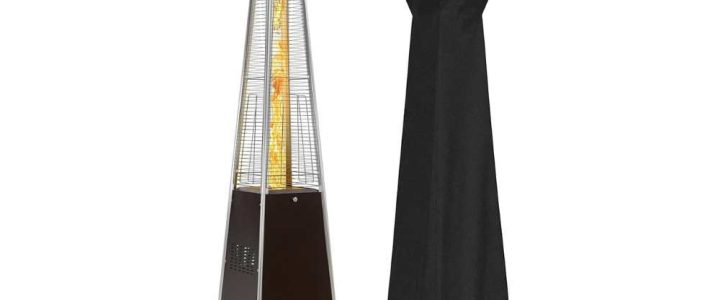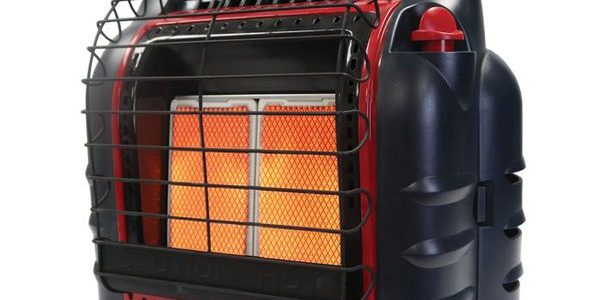As the sun sets and the temperature drops, spending time on your patio or outside space can become less inviting. However, with the proper Patio Heaters, you can amplify your outside leisure well into cooler evenings. This post will explore cost-effective patio warmers and the key concerns to help you choose the right one for your outdoor space.
Understanding Cost-Effective Patio Heaters
Patio heaters offer a convenient solution for extending outdoor living spaces into cooler weather. Moreover, with various types, sizes, and fuel sources available, it’s essential to understand their advantages. As well as, cost considerations to make an informed choice. Here’s a detailed list of popular patio heater options and critical factors to consider when aiming for cost-effectiveness.
1. Propane Patio Heaters
Propane patio heaters are loved for their comfort and portability. Fueled by using propane gas tanks, they offer instantaneous heat at the flick of a transfer. While propane might have higher long-term fees than herbal gasoline, butter is frequently more low-cost prematurely. Moreover, their flexibility in placement, not requiring a hard and fast fuel line connection, attracts them.
2. Natural Gas Patio Heaters
Connected to a fixed natural gas line, these heaters provide a continuous, cost-effective heating solution for outdoor spaces. Though the initial set-up fee may be higher due to fuel line requirements. They usually have lower operating fees than propane warmers. This is because natural gas is often less expensive than propane in many areas.
3. Electric Patio Heaters
Electric patio heaters are powered by strength and emit radiant or infrared warmness to heat outdoor regions. Moreover, they boast a decrease in advance costs and easy installation. However, operating prices may additionally vary, depending on energy rates. Advancements in electricity-efficient generation have made electric warmers more cost-powerful, especially for smaller areas or occasional use.
Key Considerations When Choosing a Cost-Effective Patio Heater
Several key factors should be considered when selecting a patio heater to ensure effective heating and long-term cost efficiency. Further, let’s delve deeper into each consideration to provide a comprehensive understanding of how to make the most economical choice for your outdoor heating needs.
1. Heating Capacity
Begin by thoroughly assessing your patio’s size and format to determine the appropriate heating capability required for the most fulfilling comfort. Choosing a heater with good enough output ensures that every nook of your outdoor area gets a sufficient warm temperature. Look for models with adjustable warmth settings, allowing you to pleasant-tune temperatures consistent with your choices and converting climate situations.
2. Energy Efficiency
Prioritize patio heaters with excessive energy performance scores to maximize fee financial savings on patio warmers through the years. Features along with progressive reflective heating factors, insulated housing, and efficient fuel combustion mechanisms extensively lessen energy wastage. By investing in a power-efficient heater, you no longer most effectively reduce operating expenses but also make contributions to environmental conservation by reducing your carbon footprint.
3. Fuel Source and Availability
Conduct a radical assessment of gas supply availability and related expenses for your neighborhood location. Consider factors such as the convenience of propane tank refills, the accessibility of natural gasoline delivery lines, and prevailing electricity fees. You can ensure a steady, warm temperature without incurring excessive costs by choosing the most value-powerful gasoline option that aligns with your heating necessities.
4. Installation and Setup
Carefully take into account the layout and layout of your out of doors area when deciding on the form of patio heater that first-class fits your wishes. Whether you opt for freestanding, wall-installed, or ceiling-installed warmers, prioritize models that provide smooth installation and compatibility along with your outdoor setup. Closely should also be paid to clearance distances and protection recommendations to prevent capability hazards all through installation and operation.
5. Durability and Weather Resistance
Investing in a long-lasting patio heater produced from extraordinary materials and chrome steel or aluminum is essential for long-term reliability and performance. Look for heaters ready with climate-resistant coatings, rust-resistant components, water-resistant seals, and UV safety to face the rigors of outdoor use. A resilient and weatherproof heater guarantees constant warmth and functionality even in harsh environmental situations.
6. Safety Features
Ensure the safety of your outdoor space by prioritizing patio heaters geared up with advanced protection functions. Automatic shutoff mechanisms, tip-over protection, and cool-to-contact surfaces are vital safeguards that limit the risk of injuries, specifically in high-traffic regions or environments frequented by children and pets. By prioritizing protection, you create a steady and fear-free outside heating that you can enjoy for yourself and your family.
7. Budget and Long-Term Costs
Take a holistic approach to budgeting by thinking about premature prices and lengthy-term charges related to operating and keeping your patio heater. Evaluate the entire possession fee, which includes fuel intake, maintenance requirements, and guarantee coverage, to determine the overall cost-effectiveness of each choice. Making an informed choice based on a complete fee analysis ensures the most advantageous fee and performance out of your patio heater investment.
Conclusion
Cost-effective patio heaters provide a perfect mixture of heat, consolation, and savings on patio heaters for outdoor spaces of all sizes with the aid of considering factors along with heating capability, electricity efficiency, gasoline supply, installation necessities, durability, safety functions, and budget considerations. You can pick the perfect patio heater to enhance your outside revel even as maximizing cost savings. With the right patio heater, you could create a comfortable and inviting outdoor environment that you may revel in year-round, irrespective of the climate.

